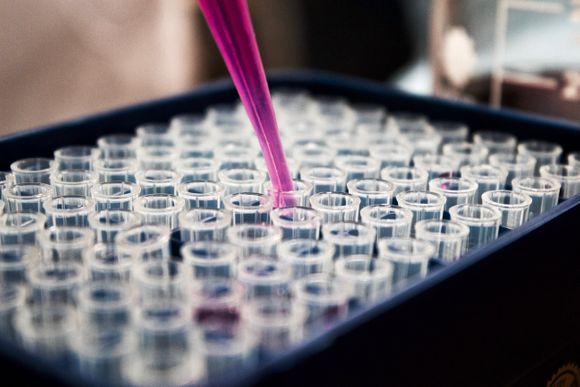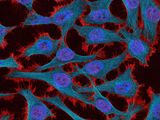Cancer is seen as a complex disease that proceeds with numerous genetic changes, including oncogenes, tumor suppressors, DNA repair, cancer metabolism, and genetic origin, leading to excessive growth, metastasis, and drug resistance. Medicine knows various methods for cancer treatment and therapy, such as chemotherapy, interventional oncology, radiotherapy, surgery, hematological oncology, and others. In fact, some of the most promising methods are aimed at destroying tumor cells and deterring their metastasization.
The modern era of cancer treatment is constantly evolving, with new breakthroughs and discoveries changing the course of treatment and therapy. It is these innovative approaches that we look at in today's article.
What is cancer
Cells are the main units that make up the human body. They grow and divide to create new cells, as the body needs them. Usually, cells die when they become too old or damaged. Then new cells appear in their place.
Cancer begins when genetic changes interfere with this consistent and rigorous process. Cells begin to grow uncontrollably and can form a mass called a "tumor". The tumor can be cancerous or benign. A cancerous tumor is a malignant formation, which means it can grow and spread to other parts of the body. A benign tumor means that the tumor can grow, but it will not spread.
Generally speaking, cancer refers to cells that grow uncontrollably and invade other tissues. Cells can become cancerous due to the accumulation of defects or mutations in their DNA. Most of the time, cells are able to detect and repair DNA damage. If a cell is severely damaged and cannot recover, it usually undergoes so-called programmed cell death or apoptosis. Cancer occurs when damaged cells grow, divide and spread unusually, instead of self-destruct.
As cancer develops in the body, it uses different mechanisms to progress and affect various organs and tissues. One of these mechanisms involves blood supply - large tumor formations rely on it to deliver oxygen and nutrients to help them grow. As tumors grow, these blood vessels are unable to provide oxygen and nutrients to any part of the tumor, leading to areas with decreased oxygen levels. However, this environment over time leads to the accumulation of acid in tumor cells.

British Columbia researchers' discovery
To cope with the stress that arises, cells adapt by releasing enzymes that neutralize the acidic conditions of their environment, allowing the cells not only to survive but also to become a more aggressive form of tumor, capable of spreading to other organs. One of these enzymes is called "carboanhydrase IX" (CAIX). A team of researchers from the Faculty of Medicine and the Institute of Cancer Research at the Тhe University of British Columbia discovered the anticancer effect of this enzyme and found that it inhibits cell growth. This is exactly what makes it the "Achilles heel" of cancer cells.
In the same study, the research team looked at cell properties and identified the weaknesses of the enzyme "CAIX". They found that the enzyme works through a powerful mechanism known as the 'genome-wide synthetic lethal screen'. This tool looks at the genetics of a cancer cell and systematically erases one gene at a time to determine whether it can be destroyed by eliminating the CAIX enzyme along with another specific gene. [ref.1]
According to Dr. Dedhar - a professor in the faculty and one of the authors of the study, this form of cell death occurs when iron accumulates and weakens the metabolism of the tumour and cell membranes. In June 2021 “Kojin Therapeutics” raised $60 million to accelerate research started at Harvard University and the Dana-Farber Cancer Institute, which involves the use of small molecules to destroy cells that are most vulnerable to ferroptosis. [ref.5]
Dr. Dedhar's research team has also found that combining CAIX inhibitors, including SLC-0111, with compounds known to cause ferroptosis, leads to catastrophic cell death and debilitates tumor growth. [ref.1][ref.3]

New strategies for cancer treatment - what are the horizons
The results of the study, published August 27, 2021 in the multidisciplinary journal Science Advances, are expected to help researchers develop new cancer treatment strategies. [ref.2] Their goal is to limit the progression of solid cancerous tumor formations, which represent the majority of tumor species occurring in the human body.
Dr. Shoukat Dedhar said another unique compound known as "SLC-0111" had previously been identified. It is currently being investigated in phase 1 clinical trials (initial human testing) as a potent inhibitor of the CAIX enzyme. While preclinical models of breast, pancreatic, and brain cancer have shown the effectiveness of this compound in suppressing tumor growth and spread, other cellular properties reduce its effectiveness. Therefore, more research is needed to confirm its potential and dependence on other factors.
In other studies on the topic, scientists looked at methods of targeting hypoxia in cancer therapy and destroying cancerous tumors. [ref.3] The two main approaches to this are bioreductive (hypoxia-activated) prodrugs (modified drugs that are transformable before they become pharmacologically active) and inhibitors of molecules on which the survival of hypoxic cells depends.
In short, this is a new type of programmed cell death and is closely related to both the maintenance of homeostasis and the development of diseases, especially cancers. [ref.4]
It is worth mentioning another step in the progress of cancer treatment. A new drug that can stop tumour growth will be offered to National Health Service patients with lung cancer - the first in Europe to receive the drug. The drug is aimed at the mutation of the KRAS gene found in a quarter of all tumours, which has become known as the "Death Star" mutation due to its spherical appearance. National Health Service researchers have spent 40 years looking for the key to this mutation, and if the treatment works, it could represent a major breakthrough in the fight against other cancers, such as pancreatic cancer and colorectal cancer. [ref.6]

We should remember that cancer belongs to the group of treatable diseases, and every step in the process of diagnosis and treatment is crucial for a favorable development. Our team will keep you up to date on the latest discoveries and achievements in the field, as always at Sanat.io.









